As a BetterHelp affiliate, we receive compensation from BetterHelp if you purchase products or services through the links provided
Embark on a journey through the most effective physical activities proven to alleviate anxiety, as curated by leading mental health and wellness experts. Discover how simple movements can transform into powerful mental tranquility and balance tools. This article offers expert insights, guiding readers to find peace and relaxation through targeted exercises.
- Hiking Calms My Mind and Reduces Anxiety
- Wood Carving Teaches Patience and Reduces Tension
- Yoga Combines Movement and Mindfulness
- Cycling Provides Mental and Physical Balance
- Yoga Reconnects Me with My Body
- Pilates Centers My Thoughts and Reduces Tension
- Trail Running Grounds My Mind
- Mindful Walking Calms My Nervous System
- Martial Arts Boosts Endorphins and Reduces Stress
- Stair Climbing Provides a Quick Mental Reset
- Tennis Offers a Mental Reset
- Fishing Provides Therapy and Clarity
- Gym Routine Releases Tension and Refocuses Mind
- Singing Purges Emotional Energy
- Swimming Creates a Meditative State
- Running Provides Mental Clarity and Reduces Anxiety
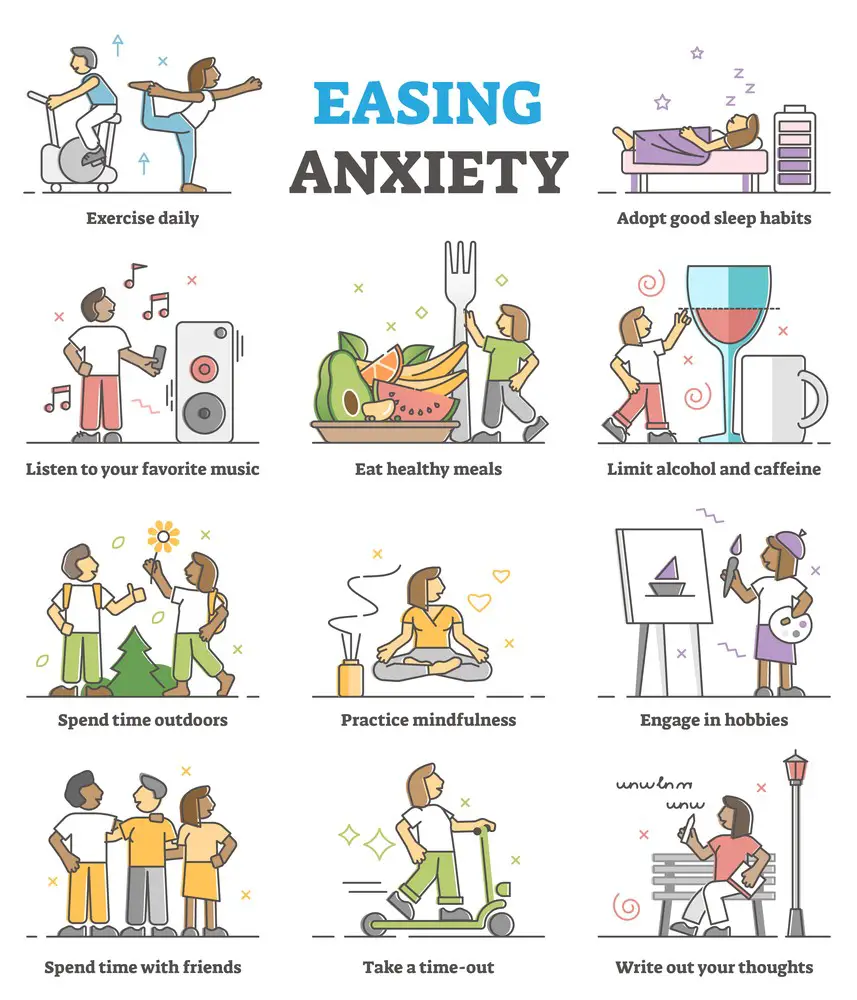
Hiking Calms My Mind and Reduces Anxiety
 I have always turned to hiking whenever the mounting pressures of life become too much to bear; it becomes incredibly therapeutic once I buckle up my boots, find a trail, and allow Mother Nature to take control. One standout hike that I remember perfectly was when I had a solo expedition to a forest park right next to my home after putting up with a rough week. At first, I was extremely unfocused, my head all messy and disorganized. However, after some time, once I shifted my focus to the sound of birds chirping, and the leaves crunching beneath my feet, I could feel my mind slowly starting to calm down.
I have always turned to hiking whenever the mounting pressures of life become too much to bear; it becomes incredibly therapeutic once I buckle up my boots, find a trail, and allow Mother Nature to take control. One standout hike that I remember perfectly was when I had a solo expedition to a forest park right next to my home after putting up with a rough week. At first, I was extremely unfocused, my head all messy and disorganized. However, after some time, once I shifted my focus to the sound of birds chirping, and the leaves crunching beneath my feet, I could feel my mind slowly starting to calm down.
There are various things that I enjoy about hiking, but what I love the most is the fact that it teaches me how to enjoy the present. I have to look at whatever is in front of me, the trail, and myself. Furthermore, climbing up a hill or dealing with a bumpy path serves as a symbol of how life is; it’s difficult but the scenery from the top is breathtaking. Moreover, when I reach the end of the hike, I feel as if I have let go of the anxiety that I was carrying with me and have left it behind on the trail.
Hiking not only allows me to blow off steam but also helps foster my sense of pride and achievement. Even if everything is left in doubt, no issue can look more congratulatory than finishing a short trail. Besides, immersing myself in nature is a great way to lose my mind over what I’m worrying about because that viewpoint is incredibly important.
Soubhik Chakrabarti, CEO, Icy Tales
Wood Carving Teaches Patience and Reduces Tension
For me personally, engaging in wood carving has become an incredibly effective way to manage anxiety. I think there’s something uniquely therapeutic about the process of taking a block of wood and slowly shaping it into something meaningful. In my case, I’ll spend about 25 to 30 minutes carving simple designs, like geometric patterns or small animal figures.
 On a deeper emotional level, wood carving teaches patience and adaptability. Mistakes happen—wood might chip in unexpected ways—but I’ve learned to embrace these imperfections as part of the process. In my experience, this mindset shift has been incredibly helpful in handling daily stress. After just 15 minutes of carving, I notice a tangible drop in tension, especially in my neck and shoulders. The finished product, even if it’s small, offers a quiet sense of accomplishment, reinforcing a steady and centered state of mind for the rest of the day.
On a deeper emotional level, wood carving teaches patience and adaptability. Mistakes happen—wood might chip in unexpected ways—but I’ve learned to embrace these imperfections as part of the process. In my experience, this mindset shift has been incredibly helpful in handling daily stress. After just 15 minutes of carving, I notice a tangible drop in tension, especially in my neck and shoulders. The finished product, even if it’s small, offers a quiet sense of accomplishment, reinforcing a steady and centered state of mind for the rest of the day.
Nate Baber, Partner and Lawyer, InjuredCT
Yoga Combines Movement and Mindfulness
I turn to yoga whenever I feel anxiety creeping in. I started practicing it during a particularly stressful time in my life, and it has made a world of difference for my mental and emotional well-being. Yoga allows me to focus on my breathing and my body, which helps me step out of my racing thoughts. It’s like a reset button for my mind.
 One thing I love about yoga is how it combines movement with mindfulness. I think the physical stretches release tension stored in my body, especially in my shoulders and neck, while the deep breathing calms my nervous system. It’s also grounding—after a session, I feel more present and less overwhelmed.
One thing I love about yoga is how it combines movement with mindfulness. I think the physical stretches release tension stored in my body, especially in my shoulders and neck, while the deep breathing calms my nervous system. It’s also grounding—after a session, I feel more present and less overwhelmed.
Another benefit is how it gives me a sense of control. When anxiety makes everything feel chaotic, sticking to a routine, even for 20 minutes, helps me feel like I’m taking care of myself.
Nick Bach, Owner and Psychologist, Grace Psychological Services, LLC
Cycling Provides Mental and Physical Balance
Cycling is an activity that makes me feel free from anxiety, and it’s one of those things I never miss doing as it helps to maintain both physical and mental balance. For me, pedaling helps remove daily stressors and focus my mind on what’s ahead on the road; hence, this calms down my mind, and the sense of calm comes from the rhythm of pedaling and the actual exertion to pedal, not forgetting the effect of endorphins released.
 Cycling also has a meditative aspect that helps me with my emotional well-being. As I ride, I can focus entirely on my environment, the movement of my body, and my breath. This mindfulness helps me reduce the mental clutter that can cause anxiety. After a long ride, I feel more centered and energized, ready to approach challenges with greater clarity. This routine not only keeps me physically fit but strengthens my ability to manage stress and maintain mental resilience. The constancy of this practice has become a key tool in sustaining my overall mental health.
Cycling also has a meditative aspect that helps me with my emotional well-being. As I ride, I can focus entirely on my environment, the movement of my body, and my breath. This mindfulness helps me reduce the mental clutter that can cause anxiety. After a long ride, I feel more centered and energized, ready to approach challenges with greater clarity. This routine not only keeps me physically fit but strengthens my ability to manage stress and maintain mental resilience. The constancy of this practice has become a key tool in sustaining my overall mental health.
Mike Kocsis, Managing Director, Balance My Hormones
Yoga Reconnects Me with My Body
Physical activities that help me manage my anxiety include yoga. I’ve found that this practice together with intentional movement and breath works so much to help reconnect me with my body and calm my mind. When going into one pose after another, then breathing deeply, I can focus only on the present and move my attention from anxious thoughts.
 The physical benefits are also monumental. Yoga stretches places where I frequently carry tension—for instance, my back, shoulders, and neck. As I release this physical strain, I also feel a looseness in my emotional state, which naturally spills over into my emotional self. Yoga gives me a respite from the chatter in my head and creates space to analyze my emotions without feeling overly burdened.
The physical benefits are also monumental. Yoga stretches places where I frequently carry tension—for instance, my back, shoulders, and neck. As I release this physical strain, I also feel a looseness in my emotional state, which naturally spills over into my emotional self. Yoga gives me a respite from the chatter in my head and creates space to analyze my emotions without feeling overly burdened.
Beyond the physical release, yoga has also deepened my emotional awareness. I have realized that regular practice allows me to become more attuned to my mental and emotional needs, thus enabling me to be more mindful when responding to anxiety. This is a support system for my general well-being and helps me stay balanced and calm in both my personal and professional spheres.
Natalie Buchwald, Founder, Manhattan Mental Health Counseling
Pilates Centers My Thoughts and Reduces Tension
One physical activity I engage in to alleviate anxiety is practicing Pilates. Beyond being a fantastic way to improve strength and flexibility,  Pilates requires focused breathing and mindful movement, which create a calming effect on the mind. This aligns closely with my years of experience as a physical therapist, where I’ve seen firsthand how movement can impact not just physical health but also mental and emotional well-being. When I began incorporating Pilates into my routine, I found it particularly effective during stressful periods. The emphasis on controlled, precise movements allowed me to center my thoughts, reduce tension, and reframe challenges with a clearer perspective.
Pilates requires focused breathing and mindful movement, which create a calming effect on the mind. This aligns closely with my years of experience as a physical therapist, where I’ve seen firsthand how movement can impact not just physical health but also mental and emotional well-being. When I began incorporating Pilates into my routine, I found it particularly effective during stressful periods. The emphasis on controlled, precise movements allowed me to center my thoughts, reduce tension, and reframe challenges with a clearer perspective.
For example, when working with a patient who struggled with both chronic back pain and anxiety, I introduced a tailored Pilates program as part of their rehabilitation. Drawing on my qualifications and understanding of musculoskeletal health, I ensured the exercises addressed their physical needs while also incorporating mindfulness elements to ease their mental strain. Over time, not only did their pain diminish, but they also reported feeling more grounded and less anxious overall. This dual impact, physical and emotional, is exactly why I encourage both patients and colleagues to integrate activities like Pilates into their daily lives. It’s a powerful reminder that movement, when approached thoughtfully, can be transformative.
Peter Hunt, Director & Physiotherapist, The Alignment Studio
Trail Running Grounds My Mind
Trail running is an activity that significantly helps manage anxiety. Being immersed in nature offers a break from routine and the natural scenery calms frayed nerves. The rhythmic pattern of running on uneven paths demands focus, pulling attention away from anxious thoughts and onto each step and breath. A useful tip to maximize the benefits is to practice mindful running. Instead of zoning out, stay present by tuning into the sensory details—the crunch of leaves, the scent of pines, the play of sunlight through branches. This conscious awareness helps ground your mind, easing stress and enhancing emotional resilience.
Casey Meraz, Owner & Digital Marketing Expert, CaseyMeraz.com
Mindful Walking Calms My Nervous System
Mindful walking has been one of my most effective anxiety-relievers. I think the combination of movement and intentional attention  combines into an internal beat that blocks out the chatter. I might walk for 20 minutes in a park near home, for instance, conscious of the rhythm of my steps, or the crunch of leaves, or the feeling of the wind. It is an exercise that makes me use my full senses which dissolves the thought trance. Even just breathing as I go through each step (for four steps, exhale for six) calms my nervous system tremendously.
combines into an internal beat that blocks out the chatter. I might walk for 20 minutes in a park near home, for instance, conscious of the rhythm of my steps, or the crunch of leaves, or the feeling of the wind. It is an exercise that makes me use my full senses which dissolves the thought trance. Even just breathing as I go through each step (for four steps, exhale for six) calms my nervous system tremendously.
For me, it’s also a time to think and not get stuck because the motion stops my mind getting stuck. After 10 or 15 minutes, I notice I have more of a normal energy level, and what was too difficult to complete feels so much easier.
Adam Klein, Certified Integral Coach® and Managing Director, New Ventures West
Martial Arts Boosts Endorphins and Reduces Stress
One physical activity that consistently helps alleviate my anxiety is practicing martial arts, specifically Brazilian Jiu-Jitsu (BJJ). As someone with a black belt in BJJ, I find that the intense focus required during training sessions allows me to be completely present, pushing aside any stress or anxiety. The physical engagement and the strategic nature of BJJ provide a combination of mental challenge and physical exertion, which effectively releases tension and boosts endorphins.
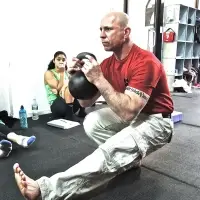 The impact of martial arts on my mental and emotional well-being extends beyond the immediate stress relief. Studies have documented that physical activity improves mood and reduces psychological stress, and I’ve witnessed this with clients and athletes I’ve coached, from U.S. Special Forces to NFL teams. When I’m teaching or training, the integration of movement and strategic planning helps manage emotional balance, reinforcing the skills necessary to steer life’s challenges.
The impact of martial arts on my mental and emotional well-being extends beyond the immediate stress relief. Studies have documented that physical activity improves mood and reduces psychological stress, and I’ve witnessed this with clients and athletes I’ve coached, from U.S. Special Forces to NFL teams. When I’m teaching or training, the integration of movement and strategic planning helps manage emotional balance, reinforcing the skills necessary to steer life’s challenges.
In 2020 and 2021, I found that my time spent training and leading virtual classes was invaluable for maintaining a positive outlook. During those challenging times, the strength I derived from martial arts and nature was crucial. This approach aligns with my philosophy—prioritizing resilience through physical and mental preparation, enabling not just personal growth but a reinforced sense of community and connection.
Phil Ross, CEO, The BodyBell Method
Stair Climbing Provides a Quick Mental Reset
 Engaging in a short, intense burst of stair climbing works wonders for alleviating anxiety. It’s not something many consider, but the combination of physical exertion and focus helps disconnect from stress triggers. While it might sound intense, just ten minutes of climbing builds up endorphins and provides a quick mental reset. Instead of worrying thoughts, the focus shifts entirely to the body’s movement and breathing. Whenever possible, using the “two-feet, one-step” method while climbing can make it easier and prevent unnecessary strain, keeping the session both effective and safe.
Engaging in a short, intense burst of stair climbing works wonders for alleviating anxiety. It’s not something many consider, but the combination of physical exertion and focus helps disconnect from stress triggers. While it might sound intense, just ten minutes of climbing builds up endorphins and provides a quick mental reset. Instead of worrying thoughts, the focus shifts entirely to the body’s movement and breathing. Whenever possible, using the “two-feet, one-step” method while climbing can make it easier and prevent unnecessary strain, keeping the session both effective and safe.
Jovie Chen, CEO & CHRO, Zogiwel
Tennis Offers a Mental Reset
 I play tennis regularly, and it’s my favorite way to blow off steam. There’s something about the quick decision-making and physical intensity that pulls me out of any anxiety spiral. During a tough case, like a recent federal criminal defense matter, hitting the court gave me the mental reset I needed to strategize effectively. The camaraderie with my tennis partners reminds me of the importance of teamwork, both on and off the court.
I play tennis regularly, and it’s my favorite way to blow off steam. There’s something about the quick decision-making and physical intensity that pulls me out of any anxiety spiral. During a tough case, like a recent federal criminal defense matter, hitting the court gave me the mental reset I needed to strategize effectively. The camaraderie with my tennis partners reminds me of the importance of teamwork, both on and off the court.
Gordon Hirsch, Founder and Managing Attorney, Hirsch Law Group
Fishing Provides Therapy and Clarity
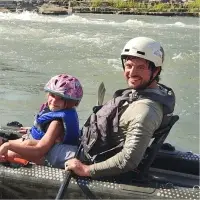 Fishing is more than a hobby because it is my therapy. There’s nothing quite like casting a line into the water and feeling the world slow down. I love the anticipation, the quiet, and the connection with nature. On a recent fishing trip, I found clarity on how to reposition a product line, focusing on how to appeal more to beginner fishermen. That stillness helps me realign my priorities and manage stress.
Fishing is more than a hobby because it is my therapy. There’s nothing quite like casting a line into the water and feeling the world slow down. I love the anticipation, the quiet, and the connection with nature. On a recent fishing trip, I found clarity on how to reposition a product line, focusing on how to appeal more to beginner fishermen. That stillness helps me realign my priorities and manage stress.
Wesley Littlefield, Marketing Manager, Anglers
Gym Routine Releases Tension and Refocuses Mind
 I go to the gym at least five days a week, and it’s one of the most effective ways I alleviate anxiety. Whether it’s weight training or cardio, the physical activity helps me release built-up tension and refocus my mind. The structure of a regular gym routine also gives me a sense of accomplishment and control, which carries over into other areas of my life. It leaves me feeling calmer, more grounded, and better equipped to handle daily challenges.
I go to the gym at least five days a week, and it’s one of the most effective ways I alleviate anxiety. Whether it’s weight training or cardio, the physical activity helps me release built-up tension and refocus my mind. The structure of a regular gym routine also gives me a sense of accomplishment and control, which carries over into other areas of my life. It leaves me feeling calmer, more grounded, and better equipped to handle daily challenges.
Erin Ruddy, Owner, Winston-Salem Massage and Bodywork
Singing Purges Emotional Energy
I think singing is a fantastic way of using our bodies to purge and process emotional energy to help us deal with anxiety. There’s a reason why a lot of deeply introspective and spiritual meditation practices tend to involve things like humming and chanting. There’s also a reason why some of the main ways that the body naturally processes emotions (crying, screaming and laughing) all involve the voice. The voice is a really powerful tool for moving emotional energy through your body and really just getting connected to your body and your breath. Singing really is a full body activity if you’re doing it right.
 Plus, singing can have the extra benefit of having emotion and meaning attached to the songs. Finding a song that really resonates with where you’re at emotionally or an emotion that you’re trying to connect to helps you dig more deeply into what you’re feeling. So, if you are really putting your full self into singing a song that actually hits home with what you’re going through or with some old pains and traumas that you may be working through. You’re connecting with the emotions and letting them move through you, you’re moving your body, you’re forcing yourself to take deep breaths, and you’re fairly literally just “letting it all out.”
Plus, singing can have the extra benefit of having emotion and meaning attached to the songs. Finding a song that really resonates with where you’re at emotionally or an emotion that you’re trying to connect to helps you dig more deeply into what you’re feeling. So, if you are really putting your full self into singing a song that actually hits home with what you’re going through or with some old pains and traumas that you may be working through. You’re connecting with the emotions and letting them move through you, you’re moving your body, you’re forcing yourself to take deep breaths, and you’re fairly literally just “letting it all out.”
Benjy Sherer, Anxiety and Trauma Coach., Benjy Sherer Coaching
Swimming Creates a Meditative State
I would hypothetically choose swimming as my go-to activity to help manage anxiety. The rhythmic nature of swimming, with steady strokes, controlled breathing, and the sensation of being enveloped by water, creates an almost meditative state that helps quiet racing thoughts.
Swimming uniquely brings together many elements that reduce anxiety, including the physical exercise causing the release of endorphins and the rhythmic breathing pattern that calms heart rate. The sensation of being in water gives the gentle pressure that feels anchoring when anxiety causes a feeling of floating away. Focus on form and breathing reduces mental space for worrying and constitutes a natural mindfulness practice.
This means that the solitary isolation of lap swimming allows for one to process emotions without social pressures while still being in a shared space with others. This reflects a healthy relationship with anxiety—acknowledging its presence, yet not letting it define the experience.
Dr. Britt Lindon, Ph.D. Clinical Psychologist, Sens Psychology
 Running Provides Mental Clarity and Reduces Anxiety
Running Provides Mental Clarity and Reduces Anxiety
One physical activity that I recently encouraged one of my C-suite clients to engage in to help alleviate anxiety is running. This executive, like many at the top, was navigating high-pressure decisions and dealing with the mental and emotional strain of managing a rapidly growing organization. Despite his success, he was struggling with recurring bouts of anxiety, particularly when facing critical moments of uncertainty or making complex decisions that affected the entire company.
Given the research on the positive impact of exercise on mental well-being, I recommended incorporating regular aerobic exercise into his routine—specifically running. I emphasized the importance of consistency, starting with just 30 minutes of running a few times a week. The goal wasn’t just physical fitness but to provide him with a structured outlet for reducing anxiety and improving overall emotional regulation.
The results have been transformative. For this client, running has become a powerful tool for mental clarity. After just a few weeks of consistent exercise, he reported feeling a noticeable shift in his ability to manage stress. The release of endorphins during his runs has significantly reduced the immediate effects of anxiety, helping him approach high-stakes decisions with a calmer, more focused mindset.
 Running also gave him a mental break, which was crucial for someone who often felt “always on.” He found that the rhythmic motion of running—coupled with time away from the constant flow of emails and meetings—allowed him to disconnect from the pressures of his role. This space not only alleviated anxiety but also gave him a chance to reflect and gain perspective on challenges that once felt overwhelming.
Running also gave him a mental break, which was crucial for someone who often felt “always on.” He found that the rhythmic motion of running—coupled with time away from the constant flow of emails and meetings—allowed him to disconnect from the pressures of his role. This space not only alleviated anxiety but also gave him a chance to reflect and gain perspective on challenges that once felt overwhelming.
Additionally, by encouraging him to set small, personal goals related to his running, I helped him create a tangible sense of achievement that wasn’t tied to his professional performance. This shift in focus helped him build confidence in his ability to manage stress in a healthy, sustainable way. Over time, this also positively impacted his physical self-perception, which contributed to higher overall self-esteem and resilience.
James Rose, Therapist & C-Suite Executive Coach, James Rose Coaching
Expanding Your Toolkit: Additional Physical Activities to Combat Anxiety
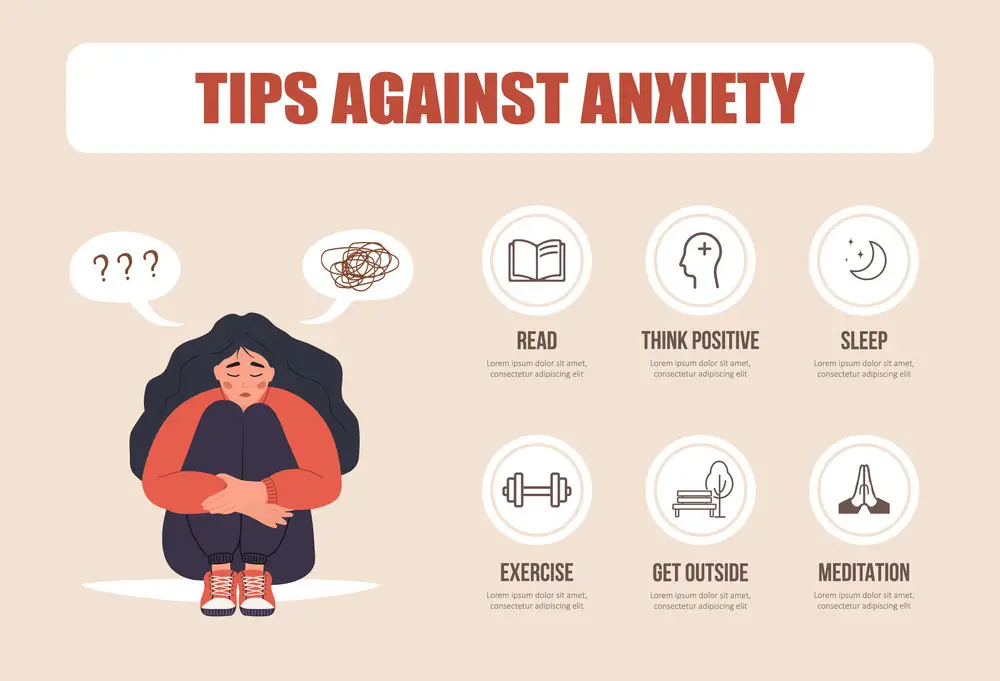 While the previous sections explored a diverse range of physical activities that help alleviate anxiety, there are even more engaging and therapeutic practices worth considering. These additional activities provide further opportunities to manage stress and improve overall mental well-being. From creative expressions to social interactions, these options cater to various preferences and lifestyles.
While the previous sections explored a diverse range of physical activities that help alleviate anxiety, there are even more engaging and therapeutic practices worth considering. These additional activities provide further opportunities to manage stress and improve overall mental well-being. From creative expressions to social interactions, these options cater to various preferences and lifestyles.
Dancing Releases Emotional Tension and Boosts Mood
Dancing offers a liberating and joyful way to alleviate anxiety. Whether practicing structured dance styles like salsa or simply dancing freely at home, moving to music fosters emotional release and mood enhancement. The rhythm and physical exertion trigger endorphin release, creating a natural high that combats stress. Dance also encourages self-expression, allowing individuals to connect with their emotions in a fun and freeing environment.
Gardening Cultivates Calm and Mindfulness
Gardening is a grounding activity that nurtures both plants and mental peace. The hands-on process of planting, watering, and nurturing plants offers a meditative rhythm that encourages mindfulness. Engaging with nature in this way reduces cortisol levels, the body’s primary stress hormone, and fosters a deep sense of accomplishment and tranquility. Even small indoor gardens or balcony plants can provide this therapeutic effect.
Rock Climbing Builds Focus and Confidence
Rock climbing challenges both the mind and body, making it an effective way to manage anxiety. The sport demands concentration, problem-solving, and physical strength, which help redirect focus away from anxious thoughts. Completing climbs, whether on indoor walls or outdoor rocks, builds confidence and resilience. The sense of achievement and focus during climbs can translate into better coping mechanisms for everyday stressors.
Team Sports Foster Social Connection and Stress Relief
Participating in team sports like soccer, basketball, or volleyball introduces a social component to anxiety relief. Physical activity combined with teamwork encourages camaraderie and reduces feelings of isolation, a common trigger for anxiety. The structured environment of team sports also provides routine, accountability, and a healthy outlet for stress, making it easier to stay engaged and motivated.
 Rowing Synchronizes Body and Mind for Stress Relief
Rowing Synchronizes Body and Mind for Stress Relief
Rowing, whether on water or a machine, offers rhythmic and repetitive movement that synchronizes the body and mind. The consistent rowing motion promotes mindfulness, focusing attention on breath and movement while releasing physical tension. The tranquil environment of rowing on open water adds a meditative quality, further enhancing its anxiety-reducing benefits.
By incorporating these additional activities into daily routines, individuals can expand their strategies for managing anxiety and improving mental well-being. Each offers unique physical, emotional, and social benefits, making it easier to find a personalized approach to achieving inner calm.
Recognizing When to Seek Professional Help
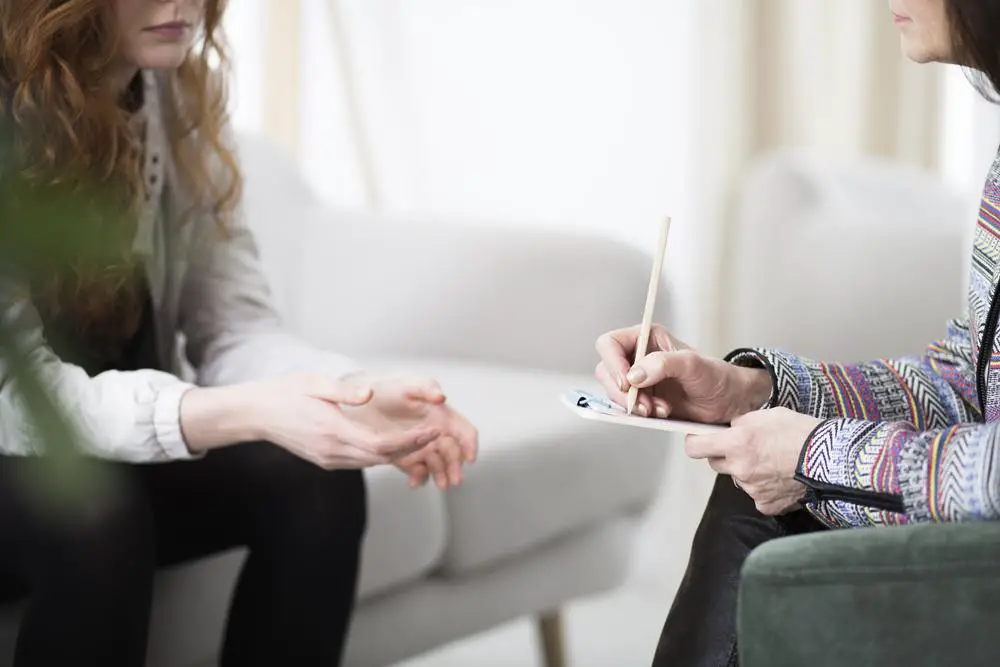
While physical activities can significantly help manage anxiety, there are times when professional intervention is necessary. Recognizing the signs that indicate the need for help is crucial for mental health maintenance.
Signs You May Need Help
- Persistent anxiety that interferes with daily activities and relationships.
- Physical symptoms such as chronic fatigue, headaches, or digestive issues without a clear cause.
- Overwhelming feelings of hopelessness or helplessness.
- Difficulty concentrating or making decisions due to anxiety.
- Withdrawal from social interactions and previously enjoyed activities.
Medication vs. Talk Therapy: Choosing the Right Path
Deciding between medicines and talk therapy depends on the severity and nature of anxiety symptoms. Understanding the options can help guide the best course of action:
- Medication may be helpful for severe anxiety or when symptoms are primarily biological. Medications like SSRIs can balance brain chemicals and reduce symptoms.
- Talk Therapy, such as cognitive-behavioral therapy (CBT), helps identify and change negative thought patterns and behaviors contributing to anxiety.
- A Combination of Both approaches is often effective, especially for moderate to severe anxiety.
Consulting with a mental health professional can help determine the most suitable treatment plan.
Setting Goals and Recognizing Progress
Setting achievable goals and tracking progress is essential for managing anxiety and fostering self-improvement. Breaking larger goals into smaller, manageable steps can make them feel less overwhelming and more attainable.
Goal-Setting Strategies
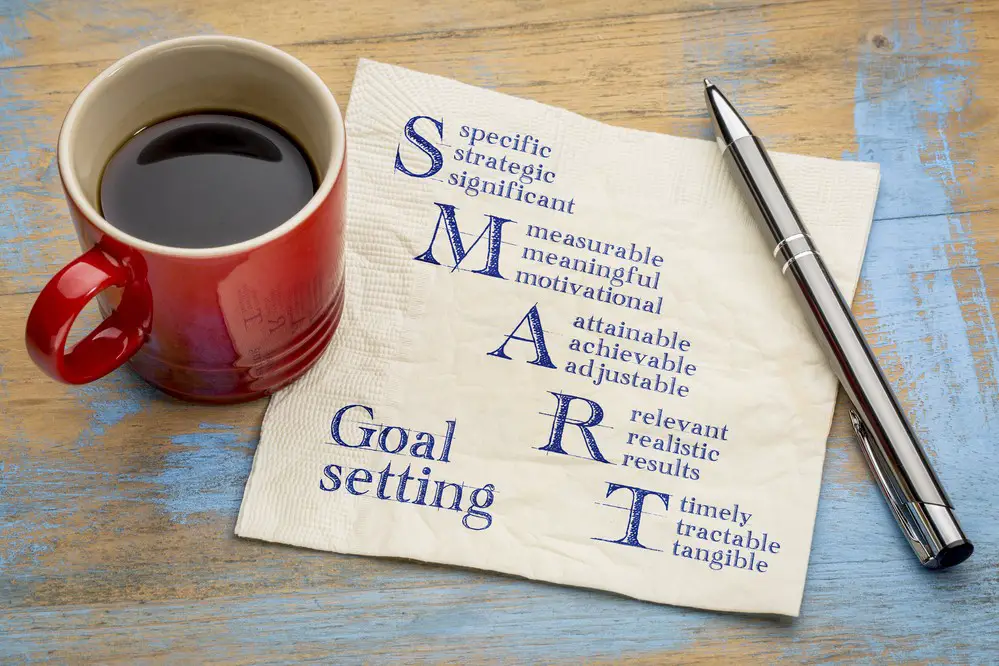
- Set SMART Goals: Specific, Measurable, Achievable, Relevant, and Time-bound goals ensure clarity and focus.
- Start Small: Begin with simple, manageable objectives to build momentum.
- Track Progress: Use journals, apps, or checklists to monitor progress and celebrate small wins.
- Adjust When Needed: Be flexible and adjust goals as circumstances change.
Recognizing Progress
- Reflect on how you handle stress compared to the past.
- Celebrate milestones, no matter how small.
- Acknowledge improvements in physical health, sleep patterns, and mood stability.
By recognizing when to seek help and implementing goal-setting strategies, individuals can take meaningful steps toward managing anxiety and improving overall well-being.
- How to Stay Calm When Dealing with Head Lice - September 30, 2025
- Easy Ways to Relax at the End of the Day - September 30, 2025
- How Organized Equipment Maintenance Reduces Worker Stress - September 30, 2025
This site contains affiliate links to products. We will receive a commission for purchases made through these links.

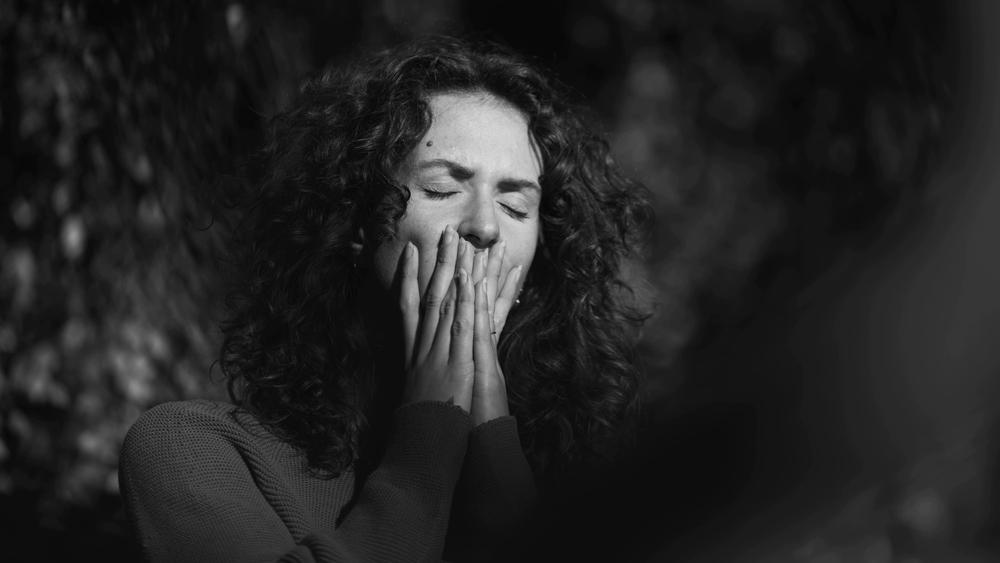
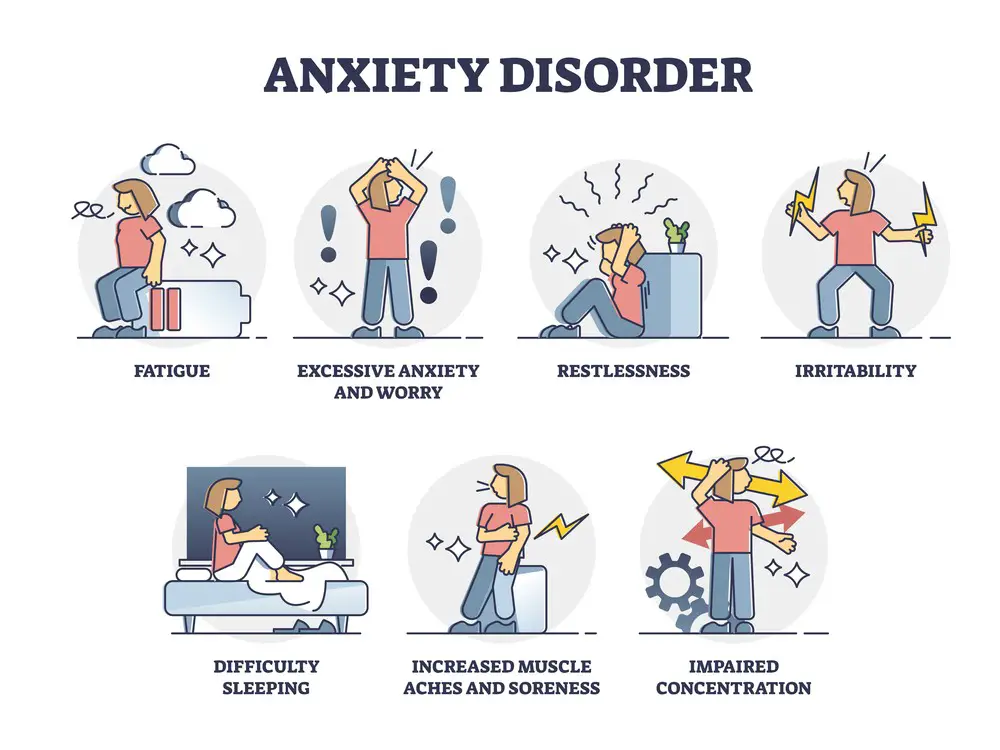 Running Provides Mental Clarity and Reduces Anxiety
Running Provides Mental Clarity and Reduces Anxiety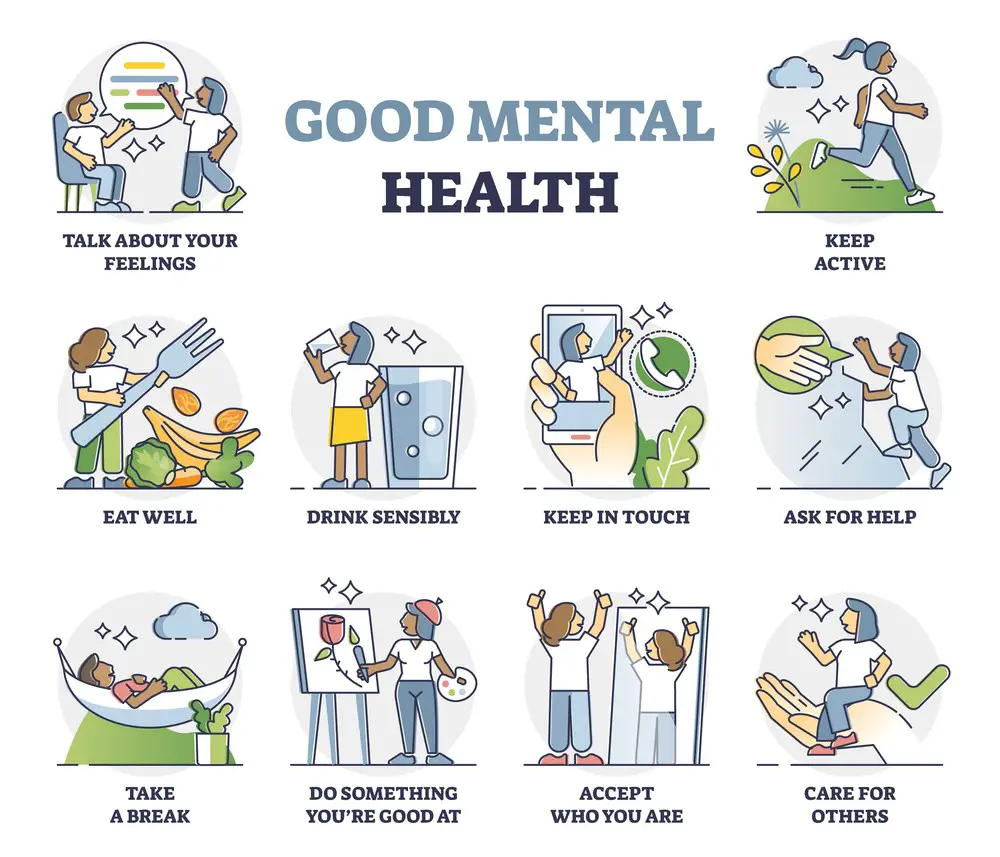 Rowing Synchronizes Body and Mind for Stress Relief
Rowing Synchronizes Body and Mind for Stress Relief
